 W
WGrace Abbott was an American social worker who specifically worked in improving the rights of immigrants and advancing child welfare, especially the regulation of child labor. Her elder sister, Edith Abbott, who was a social worker, educator and researcher, had professional interests that often complemented those of Grace's.
 W
WLaura Jane Addams was an American settlement activist, reformer, social worker, sociologist, public administrator and author. She was an important leader in the history of social work and women's suffrage in the United States and advocated for world peace. She co-founded Chicago's Hull House, one of America's most famous settlement houses. In 1910, Addams was awarded an honorary master of arts degree from Yale University, becoming the first woman to receive an honorary degree from the school. In 1920, she was a co-founder of the American Civil Liberties Union (ACLU).
 W
WA bobbin boy was a boy who worked in a textile mill in the 18th and early 19th centuries. He would bring bobbins to the women at the looms when they called for them, and collected the full bobbins of spun cotton or wool thread. They also would be expected to fix minor problems with the machines. Average pay was about $1.00 a week, with days often beginning at 5:30 am and ending around 7:30 pm six days a week. One example of rising from this job to great heights in America was young Andrew Carnegie, who at age 13 worked as a bobbin boy in 1848. The job as a bobbin boy was extremely dangerous, and there was always an extreme risk of death.
 W
WA breaker boy was a coal-mining worker in the United States and United Kingdom whose job was to separate impurities from coal by hand in a coal breaker. Although breaker boys were primarily children, elderly coal miners who could no longer work in the mines because of age, disease, or accident were also sometimes employed as breaker boys. The use of breaker boys began in the mid-1860s. Although public disapproval of the employment of children as breaker boys existed by the mid-1880s, the practice did not end until the early 1920s.
 W
WMadeline (Madge) McDowell Breckinridge was an American leader of the women's suffrage movement in Kentucky. She married Desha Breckinridge, editor of the Lexington Herald, which advocated women's rights, and she lived to see the women of Kentucky vote for the first time in the presidential election of 1920. She also initiated progressive reforms for compulsory school attendance and child labor. She founded many civic organizations, notably the Kentucky Association for the Prevention and Treatment of Tuberculosis, an affliction from which she had personally suffered. She led efforts to implement model schools for children and adults, parks and recreation facilities, and manual training programs.
 W
WCannelton Cotton Mill, also known as Indiana Cotton Mill, is a National Historic Landmark of the United States located in Cannelton, Indiana, United States. Built in 1849 as an effort to expand textile milling out of New England, it was the largest industrial building west of the Allegheny Mountains, designed by Thomas Alexander Tefft, an early industrial architect. It was declared a National Historic Landmark in 1991. The building now houses residences.
 W
WThe Child Labor Amendment is a proposed and still-pending amendment to the United States Constitution that would specifically authorize Congress to regulate "labor of persons under eighteen years of age". The amendment was proposed on June 2, 1924 following Supreme Court rulings in 1918 and 1922 that federal laws regulating and taxing goods produced by employees under the ages of 14 and 16 were unconstitutional.
 W
WChild labor laws in the United States address issues related to the employment and welfare of working children in the United States. The most sweeping federal law that restricts the employment and abuse of child workers is the Fair Labor Standards Act of 1938 (FLSA). Child labor provisions under FLSA are designed to protect the educational opportunities of youth and prohibit their employment in jobs that are detrimental to their health and safety. FLSA restricts the hours that youth under 16 years of age can work and lists hazardous occupations too dangerous for young workers to perform.
 W
WMabel Cory Costigan (1873–1951) was an American community and church leader and advocate for labor laws for children and foreign-born individuals. Among her many social and political endeavors, she served on the advisory council of the National Child Labor Committee and was vice president of the National Consumers League.
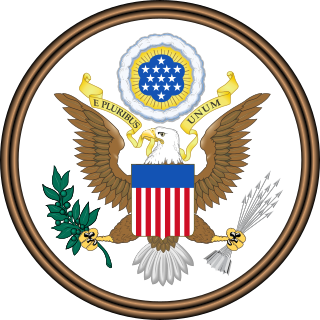 W
WThe Fair Labor Standards Act of 1938 29 U.S.C. § 203 (FLSA) is a United States labor law that creates the right to a minimum wage, and "time-and-a-half" overtime pay when people work over forty hours a week. It also prohibits employment of minors in "oppressive child labor". It applies to employees engaged in interstate commerce or employed by an enterprise engaged in commerce or in the production of goods for commerce, unless the employer can claim an exemption from coverage.
 W
WIsrael Moore Foster was a Republican Representative in the United States Congress from the State of Ohio, serving three terms from 1919 to 1925.
 W
WLewis Wickes Hine was an American sociologist and muckraker photographer. His photographs were instrumental in bringing about the passage of the first child labor laws in the United States.
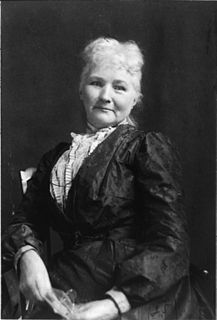 W
WMary G. Harris Jones, known as Mother Jones from 1897 onwards, was an Irish-born American schoolteacher and dressmaker who became a prominent union organizer, community organizer, and activist. She helped coordinate major strikes and co-founded the Industrial Workers of the World.
 W
WThe Keating–Owen Child Labor Act of 1916 also known as Wick's Bill, was a short-lived statute enacted by the U.S. Congress which sought to address child labor by prohibiting the sale in interstate commerce of goods produced by factories that employed children under fourteen, mines that employed children younger than sixteen, and any facility where children under fourteen worked after 7:00 p.m. or before 6:00 a.m. or more than eight hours daily. After its original failure to be enacted, the bill was revised and re-introduced to Congress, where it was finally accepted. The basis for the action was the constitutional clause giving Congress the task of regulating interstate commerce. The Act specified that the U.S. Attorney General, the Secretary of State, and the Secretary of Agriculture would convene a caucus to publish from time to time uniform rules and regulations to comply with the Act. To enforce the Act, the Secretary of Labor would assign inspectors to perform inspections of workplaces that produce goods for commerce. The inspectors would have the authority to make unannounced visits and would be given full access to the facility in question. Anyone found in acceptance of this Act or who gave false evidence would be subject to fines and/or imprisonment.
 W
WFlorence Moltrop Kelley was a social and political reformer and the pioneer of the term wage abolitionism. Her work against sweatshops and for the minimum wage, eight-hour workdays, and children's rights is widely regarded today.
 W
WThe Lowell mill girls were young female workers who came to work in industrial corporations in Lowell, Massachusetts, during the Industrial Revolution in the United States. The workers initially recruited by the corporations were daughters of New England farmers, typically between the ages of 15 and 35. By 1840, at the height of the Textile Revolution, the Lowell textile mills had recruited over 8,000 workers, with women making up nearly three-quarters of the mill workforce.
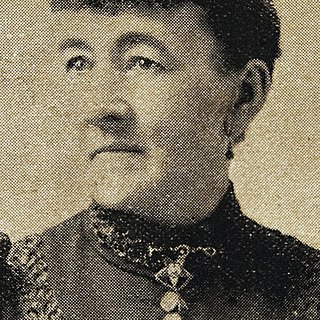 W
WElizabeth Chambers Morgan was an American labor organizer, social reformer, and socialist agitator based in Chicago, Illinois. She immigrated to the United States from England with her husband Thomas J. Morgan in 1869. She is known for exposing sweatshop conditions in Chicago. From 1888 to 1895 she was the leading woman in the Chicago labor movement.
 W
WThe National Child Labor Committee, or NCLC, was a private, non-profit organization in the United States that served as a leading proponent for the national child labor reform movement. Its mission was to promote "the rights, awareness, dignity, well-being and education of children and youth as they relate to work and working."
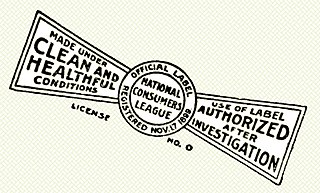 W
WThe National Consumers League, founded in 1899, is an American consumer organization. The National Consumers League is a private, nonprofit advocacy group representing consumers on marketplace and workplace issues. The NCL provides government, businesses, and other organizations with the consumer's perspective on concerns including child labor, privacy, food safety, and medication information.
 W
WThe newsboys' strike of 1899 was a U.S. youth-led campaign to force change in the way that Joseph Pulitzer and William Randolph Hearst's newspapers compensated their force of newsboys or newspaper hawkers. The strikers demonstrated across New York City for several days, effectively stopping circulation of the two papers, along with the news distribution for many New England cities. The strike lasted two weeks, causing Pulitzer's New York World to decrease its circulation from 360,000 papers sold per day to 125,000. Although the price of papers was not lowered, the strike was successful in forcing the World and Journal to offer full buybacks to their sellers, thus increasing the amount of money that newsies received for their work.
 W
WJohn Augustine Ryan (1869–1945) was an American Catholic priest who was a noted moral theologian and advocate of social justice. Ryan lived during a decisive moment in the development of Catholic social teaching within the United States. The largest influx of immigrants in America's history, the emancipation of American slaves, and the industrial revolution had produced a new social climate in the early twentieth century, and the Catholic Church faced increasing pressure to take a stance on questions of social reform.
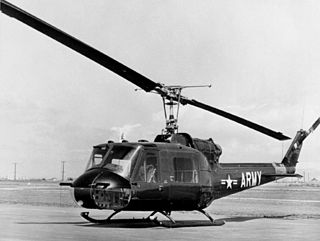 W
WOn July 23, 1982, a Bell UH-1 Iroquois helicopter crashed at Indian Dunes in Valencia, Santa Clarita, California, during the making of Twilight Zone: The Movie. The crash killed three people on the ground and injured the six helicopter passengers. Those killed were actor Vic Morrow, child actor Myca Dinh Le and child actress Renee Shin-Yi Chen. The incident led to years of civil and criminal action and was responsible for the introduction of new procedures and safety standards in the filmmaking industry.
 W
WMina Caroline Ginger Van Winkle was a crusading social worker, suffragist, and groundbreaking police lieutenant. From 1919 until her death in 1933, she led the Women's Bureau of the Metropolitan Police Department of the District of Columbia, and became a national leader in the protection of girls and other women during the law enforcement and judicial process. Her provocative statements about gender and morality in the jazz age brought her further national attention.
 W
W